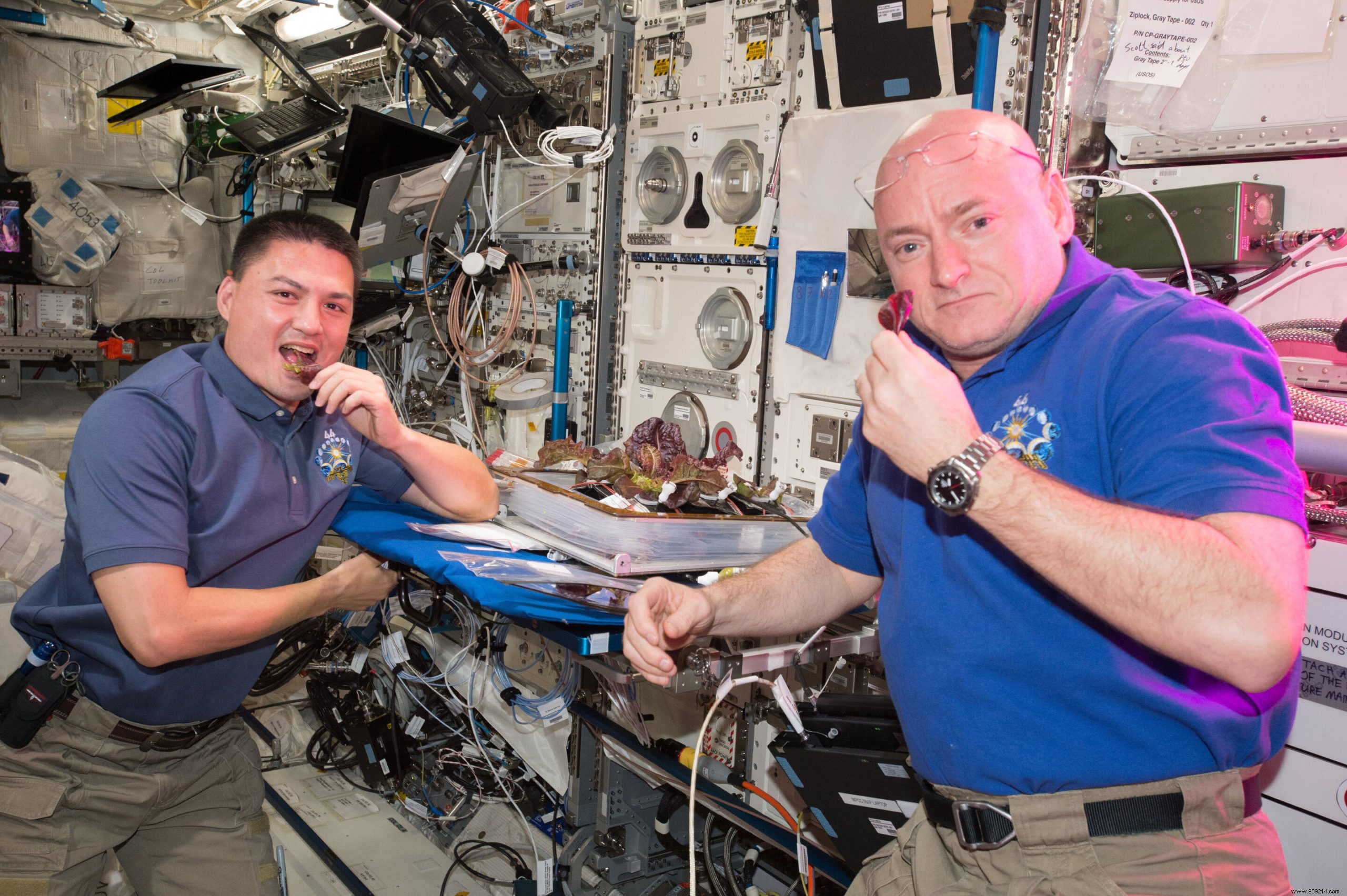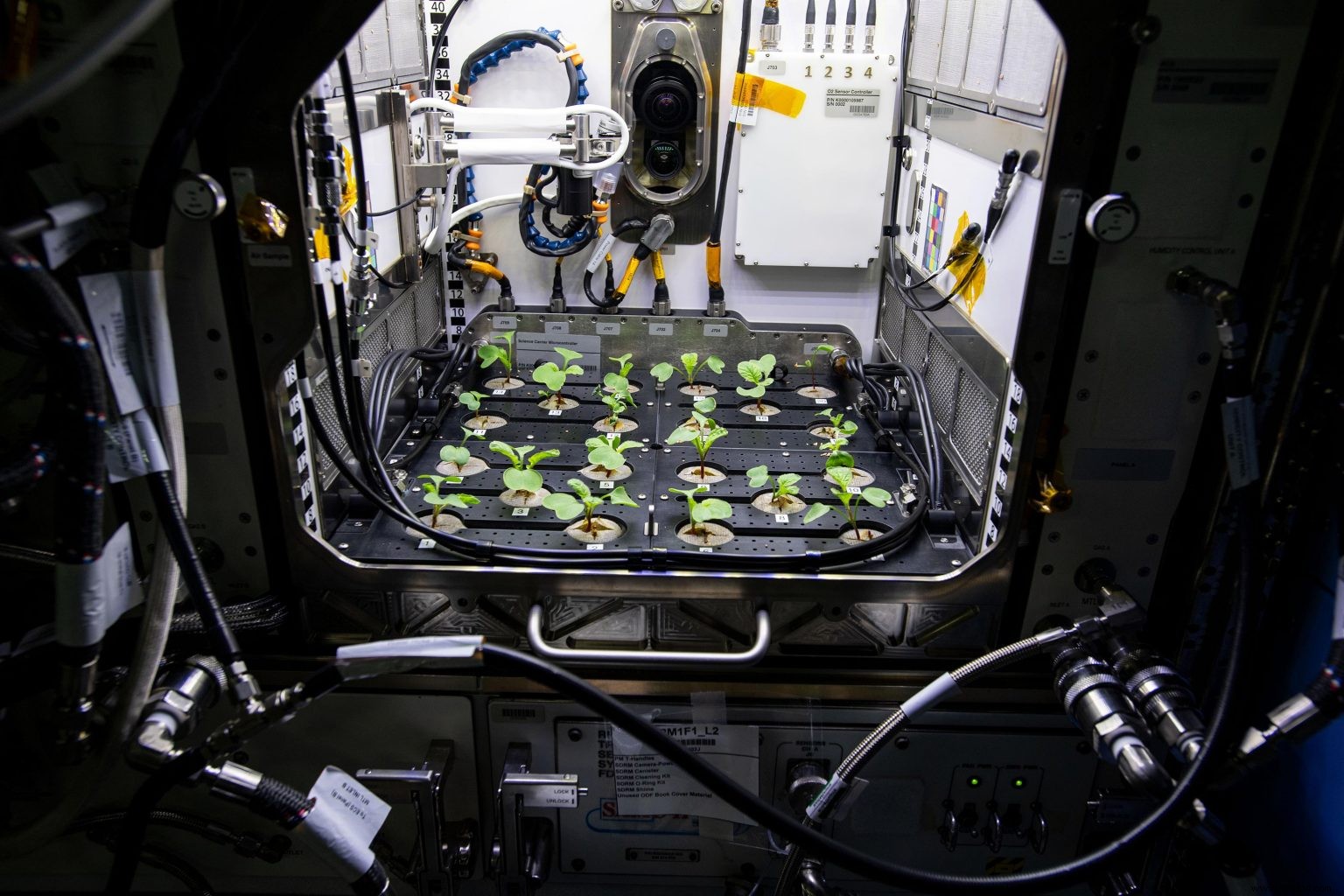A few days ago, astronaut Kate Rubins harvested the first radishes that grew on board the ISS. The brassicas (about twenty plants) were then placed in a cold room awaiting the return trip to Earth scheduled for next year.
Like other agencies and private companies, NASA aims for sustainable exploration of the Moon and, a little later, the planet Mars. At first, astronauts will enjoy freeze-dried meals like today. However, these foods wrapped in plastic do not delight the taste buds of the inhabitants of the ISS. In addition, some vitamins (C and K) also disappear over time.
If these long-term projects come to fruition, then the future astronauts concerned will have to produce fresh and nutritious food directly on site , the freight costs being far too high. In this spirit, the American agency has been exploring for several years the ability of certain plants to grow in a microgravity environment.
Between 2014 and 2016, astronauts aboard the ISS attempted to grow lettuce in the Vegetable Production System (nicknamed "Veggie"). In short, imagine a machine specially designed to grow crops in space and made up of small growth chambers equipped with LED lighting and a watering system . Meanwhile, ground crews are also growing the same seedlings on Earth so they can compare harvests.
Note that the Russians were the first to grow products on the ISS. Between 2003 and 2005, they managed to germinate peas.
These experiments, so far, have been rather fruitful . Astronauts have indeed managed to grow salad and eat it. From the feedback, the plants are obviously very good and for a few months we know that lettuce in space is as nutritious as on Earth.

Then, in 2017, NASA developed a new machine, the Advanced Plant Habitat (APH), a germination module the size of a mini-fridge. Recently, astronauts grew radishes there. Why radishes? Because these plants are both nutritious and edible , have a fairly short culture time and are genetically similar to Arabidopsis , a plant frequently studied in microgravity.
And the harvest was good! On November 30, astronaut Kate Rubins meticulously gathered twenty plants . Placed in a small cold room, they will return to Earth in 2021 during SpaceX's 22nd commercial cargo mission. During this time, the "control seedlings" grew almost as much and as fast.

Unlike previous APH and system experiences production plants (Veggie) that relied on porous clay preloaded with a slow-release fertilizer, this trial relied on precisely defined amounts of minerals supplied . Such precision allows a better comparison of the nutrients supplied and absorbed by the plants.
The chamber in which the radishes were sown also uses broad-spectrum red, blue, green and white LED lights to stimulate plant growth. "Sophisticated control systems deliver water, while control cameras and more than 180 sensors in the chamber allow researchers at NASA's Kennedy Space Center to monitor plant growth as well as regulate humidity levels, temperature and carbon dioxide (CO2) concentration “, also writes NASA.
Researchers now plan to repeat the experiment soon by planting another set of radish seeds.